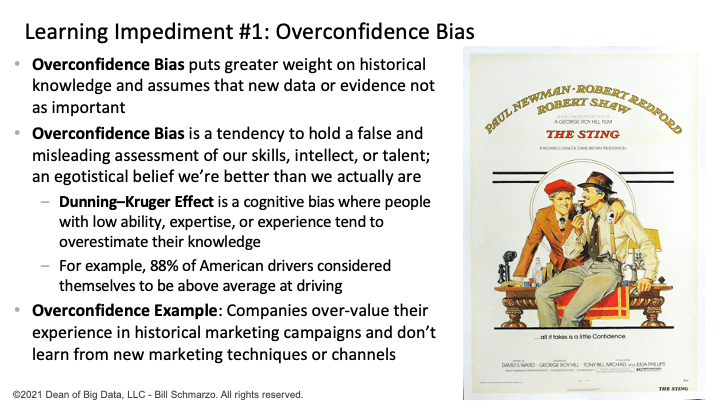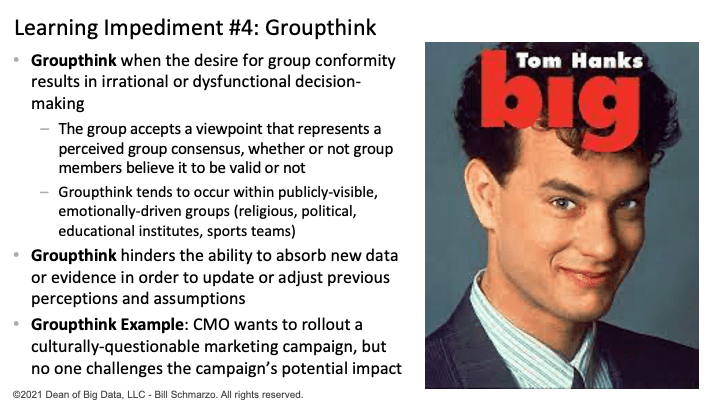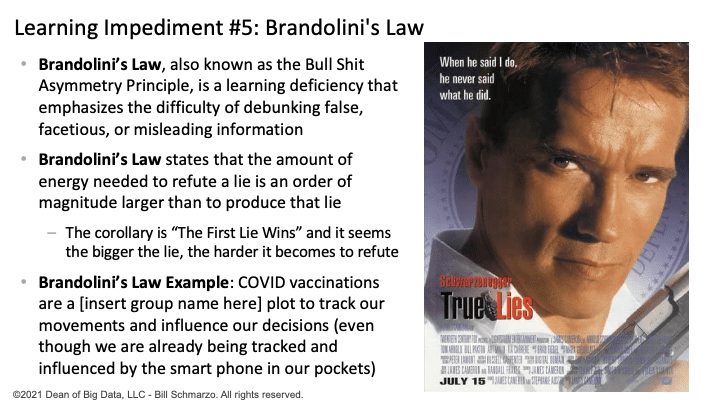
In the blog “We Live in a Bayesian World”, I talked about how both humans and machines leverage Bayesian Inference to learn. The Bayesian Inference learning process starts by analyzing historical data to create or establish a prior probability distribution (or assumption).
Prior Probability Distribution is the probability of the occurrence of an event based on established or historical patterns, trends, and relationships found in the historical data.
We then collect new evidence (or data) and adjust our prior probability distribution to reflect the new evidence, yielding a posterior probability distribution.
Posterior Probability Distribution represents the probability of the occurrence of an event based on updating the Prior Distribution with the more current Evidence Distribution (Figure 1).

Figure 1: How Bayesian Inference Drives Human and Machine Learning
Bayesian Inference provides a simple machine learning concept that works exceptionally well for machines and devices.
Unfortunately, those darn humans have a few learning impediments that impact our ability to effectively learn from integrating a historical perspective with new evidence or data. Let’s explore some impediments that hinder our ability to learn more effectively.
Human Impediments to Bayesian Inference Learning
Here is a few of those learning impediments and how they impact our ability to learn using Bayesian Inference. And yes, I am a movie junkie (and I usually watch junk movies) and will frequently use movie references to help make my points.
Learning Impediment #1: Over-confidence. Humans put significantly more weight on what we already know and assume that what we don’t know (new data or evidence) isn’t important. This results in the overweighting of historical data and slows our ability to integrate new data or evidence to update the posterior probability distribution at a pace commensurate with market, societal, and environmental changes. See the Climate Change debate (Figure 2).

Figure 2: Learning Impediment #1: Overconfidence Bias
Learning Impediment #2: Recency Bias. Recency Bias is the tendency to emphasize experiences that are freshest in your memory – current data or evidence – even if that current data or evidence is not reliable or relevant. With Recency Bias, humans tend to overweight current data and are reluctant to learn from historical performance and lessons. Remember, “If we forget our history, then we are at risk of repeating it.” Figure 3.

Figure 3: Learning Impediment #2: Recency Bias
Learning Impediment #3: Anchoring Bias. Anchoring bias is the tendency to glom onto a single factoid as a reference point although it may have no logical relevance to the decision at hand. Anchoring bias has the effect of overweighting our historical knowledge and hinders our ability to integrate new data or evidence to update our posterior probability distribution (Figure 4).

Figure 4: Learning Impediment #3: Anchoring Bias
Learning Impediment #4: Groupthink. Groupthink is the desire for group conformity, which can lead to irrational or dysfunctional decision-making. With Groupthink, the group accepts a viewpoint representing a perceived group consensus, whether or not group members believe it to be valid. Groupthink tends to occur within publicly-visible, emotionally-driven groups such as religious and political groups and even amongst educational institutes and sports teams…#GoCubbies (Figure 5)!

Figure 5: Learning Impediment #4: Groupthink
Learning Impediment #5: Brandolini’s Law. Brandolini’s law, also known as the Bullshit Asymmetry Principle (sounds much cooler), highlights the difficulty of debunking false, facetious, or misleading information. Brandolini’s Law states that the amount of energy needed to refute bullshit is an order of magnitude larger than it is to produce the bullshit. Brandolini’s Law has a corollary – the “The First Lie Wins” – that certain politicians have mastered, and it seems the bigger the lie, the harder it becomes to refute (Figure 6).

Figure 6: Learning Impediment #5: Brandolini’s Law
Summary: Bayesian Inference Learning Challenges
These learning impediments hinder our ability to integrate new data with historical data to accelerate our learning. Understanding and educating your organization on these learning traps is critical if you are seeking to increase your organization’s data and decision literacy (Figure 7).
Figure 7: Data and Decision Literacy Education Framework
How do we avoid these learning traps?
- Awareness is everything. Train decision makers on these learning traps and what they should do to avoid them.
- Implement a structured decision-making process that enforces the consideration and blending of new data with historical data in supporting the organization’s decision-making.
- Seek input from various stakeholders and Subject Matter Experts to safeguard falling into one of these learning traps.
- Ensure that learning is a continuous process, not a corporate event.
- Actively seek to gather new evidence and data, especially when everything seems fine.
- Empower whistle-blowers who can call BS when they see an organization’s learning process falling into one of these traps.
- Use Review Boards to ensure that the organization has contemplated the potential unintended costs of decisions and that everyone is empowered to a voice (remember Tom Hanks in the movie “Big”).
I’m sure that other learning impediments hinder our ability to learn and adjust. Please share your thoughts. Learning is always better when we are learning together. And you don’t need to be Thomas Bayes to master Bayesian Inference!
